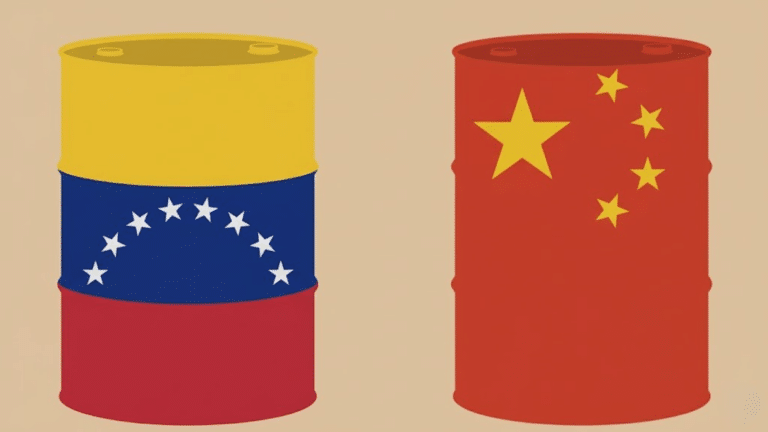This report represents the research and views of the author. It does not necessarily represent the views of the Center on Global Energy Policy. The piece may be subject to further revision. Contributions to SIPA for the benefit of CGEP are general use gifts, which gives the Center discretion in how it allocates these funds. More information is available at Our Partners. Rare cases of sponsored projects are clearly indicated. For a full list of financial supporters of the Center on Global Energy Policy at Columbia University SIPA, please visit our website at Our Partners. See below a list of members that are currently in CGEP’s Visionary Annual Circle.
-
CGEP’s Visionary Annual Circle
-
(This list is updated periodically)
Air Products
Anonymous
Jay Bernstein
Breakthrough Energy LLC
Children’s Investment Fund Foundation (CIFF)
Executive Summary
Oil is the largest primary fuel, and the trajectory of oil consumption is of great concern and consequence for economic, political, and, not least, for climate change reasons. Anticipating oil prices and production from year to year is not easy; identifying even basic ingredients of aggregate demand and supply schedules, such as price or income elasticities, is notoriously difficult. It’s an additional challenge to model the structure of a market that sometimes appears to be highly cartelized, and at other times populated by a large flock of peaceful price takers.
But a remarkably steady metric—and possible tool for projecting consumption into the future—has been identified in this paper: oil intensity. Oil intensity is the volume of oil consumed per unit of gross domestic product (GDP). Measured simply in barrels per dollar, it is often viewed as a broad measure of oil efficiency; it certainly demonstrates the importance of oil in a society.
The efficiency of oil use has improved, in other words oil intensity has declined, over the years and decades. In 1973, for example, when oil intensity was at its zenith, the world used a little less than one barrel of oil to produce $1,000 worth of GDP (2015 prices). By 2019 (the last data set before Covid) global oil intensity was 0.43 barrel per $1,000 of global GDP—a 56% decline. Oil has become a lot less important and humanity has become more efficient in making use of it.
What is worth a closer look, and is the focus of this paper reporting on oil and gas related research at Columbia University’s Center on Global Energy Policy, is the pattern by which this progress has been achieved. Since 1984, oil intensity has fallen every year in an almost perfectly linear fashion: the amount of oil used per dollar of global GDP has dropped by roughly the same amount each year. Wars and revolutions, booms and busts, OPEC successes and failures, and every other monumental event in the last 35 years left their imprint on oil markets but didn’t alter oil intensity’s steady, downward crawl. This kind of regularity is very rare in any long-time trend, in economics or in energy.
Although oil intensity isn’t a new topic, an attempt to explain its curiously consistent downward progress—or even any discussion about it—is hard to find in the literature. For this paper, the authors explain the trend and cross-validate its predictive potential before delving into possible reasons behind the linear decline in oil intensity. It finally extrapolates what such a continuing trend might mean for oil consumption and policies around it going forward. Key findings of this research include the following:
- The amount of oil needed to produce $1,000 worth of global GDP (0.43 barrel in 2019) has fallen by just under 0.01 barrel each year for the last three and a half decades. The predictive power of this linear approximation was tested by running regressions on overlapping windows of at least 20 years of data from 1984 to 2017. Comparing the resulting near-term demand forecasts against actual demand for years in this period, the average error was 1.7% to 5.1%—strikingly reliable, especially over the longer time horizons.
- These steady volumetric improvements in the oil intensity metric are possibly the result of a shift in the composition of oil demand from intermediate to final consumption. The typically single-fuel appliances associated with final consumption (such as a car or new boiler) restrict inter-fuel substitutability and price elasticity, whereas for intermediate consumption (such as in a power plant or a petrochemical factory), there can be greater allowance for fuel-switching. Globalization has helped to spread the efficiency gains in end-user appliances quickly and evenly around the world.
- The time trend also reflects a gradual regime change from a supply- to a demand-constrained global oil market. In percentage terms, oil intensity first declines at rates lower than global GDP growth, allowing global oil demand to rise. Over time, given its linear functional form, the rate of intensity decline will accelerate to outpace the rate of global GDP growth, in which case global oil demand would peak and start to decline.
- While it is conceivable that relative price changes could break the trend, by reconfiguring the degree of substitutability embodied in the capital stock, so far neither shale oil (accelerating oil demand) nor the energy transition (decelerating it) have had this effect. For now, the linear trend holds.
- A key ramification for policy makers is that the less scope for fuel substitution in final goods (the lower the price sensitivity of demand), the higher any enacted carbon price would have to be to dent oil consumption.





